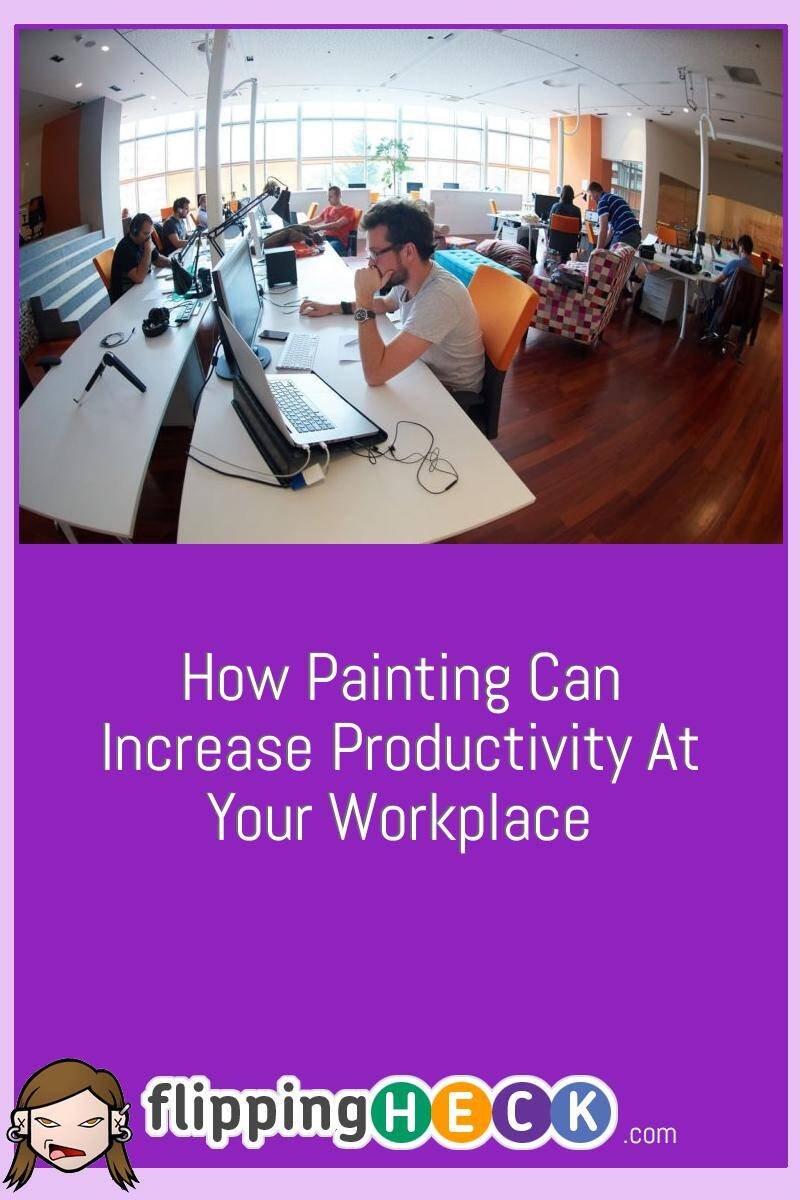How Painting Can Increase Productivity At Your Workplace
Often members of staff can appear fatigued or unmotivated despite making good time and managing workloads. In the workplace, we sometimes find that our mood can completely change based on our surroundings and décor. For instance, how you paint the breakroom can offer staff a respite from the white office walls and help reconfigure focus, as it’s not only the workload that affects us at work. Oddly enough the surroundings have more to do with our general mood and emotions then we realise even down to the paint colour we use on our walls.

Often members of staff can appear fatigued or unmotivated despite making good time and managing workloads. In the workplace, we sometimes find that our mood can completely change based on our surroundings and décor. For instance, how you paint the breakroom can offer staff a respite from the white office walls and help reconfigure focus, as it’s not only the workload that affects us at work.
Oddly enough the surroundings have more to do with our general mood and emotions then we realise even down to the paint colour we use on our walls.
Colour Psychology
The earliest instance of colour psychology originates from the German poet, artist and politician Johann Wolfgang von Goethe.

Image Source: commons.wikimedia.org
Using the understanding of light and colour available at the time he published, Theory of Colors in which he explores how each shade based on their values of light or darkness and propositions. Furthermore, he proposed that each hue had a significant impact on our moods and emotions, based on the degree of darkness within a colour itself.
For instance, Goethe suggests yellow evokes a happy feeling because it allows light to pass through it. While blue carries a blackness within, making us think of the cold, and the distant, unreachable skies. While most of Goethe’s findings came from his observations of the time and experience, some insights are still around today as the science of colour psychology, with uses both in branding and marketing area.
Utilising colour psychology in the workplace is a technique many companies have used to increase workplace productivity.
What Colour Increases Productivity?
Image Source: Paid
As a visual language, colour plays an integral role in all non-verbal settings – using the interior of our workplace, as an example. Picking the best colour for your office walls is tricky as its effect on employees happens on a subconscious level. Each primary colour has, a distinctive identity on its own as colour psychologist Angela Wright explains. Red invokes a physical reaction while Yellow plays heavily on our emotional state.
For instance, in the office if we painted an entire wall bright red, it’s likely we would trigger a “fight or flight” responsive in staff. While this can work great for any workplace that requires high energy such as a personal trainer, most day to day officer works would find this physical response overwhelming.
Wright also adds that different colour saturation can affect work-efficiency. She describes warmer colours as invoking optimism, enthusiasm and energy, while more refreshing colours give the office a sense of peace and tranquillity. When using colour psychology in the workplace, these shades are best avoided based on their detrimental effect on productivity.
Anything too bright or dark can indict a sense of stress and tension. More traditional colours like beige or grey can also give off a sense of shabbiness and cause distress, as a recent study from the University of Texas found that the use of bland, unstimulating colours to paint office walls would increase feelings of dull and gloominess amongst employees. With the effects even going as far as distracting staff from their tasks.
Best Colours For the Office?

Image Source: Paid
A good understanding of colour psychology can come in handy while hiring painting contractors for repainting the office, as every work environment has different moods and effects they look to stimulate.
For example, if deadlines drive your company, then more refreshing colours like blue and green are an excellent choice due to their ability to encourage relaxation and create balance. Accenting the office with blue, or using a dark green in the breakroom can help employees take a minute to catch their breath.
On the other hand, if your workplace sees staff attending a lot of meetings and engaging with others, then warm colours like yellow and orange are the way to go. Used to boost creativity, co-operation and optimism, these hues will have staff feeling happier and ready to sit down for a chat.
Because employees spend a significant amount of time at work, it’s essential to create a work environment that sees moods rising and efficiency boosted.

